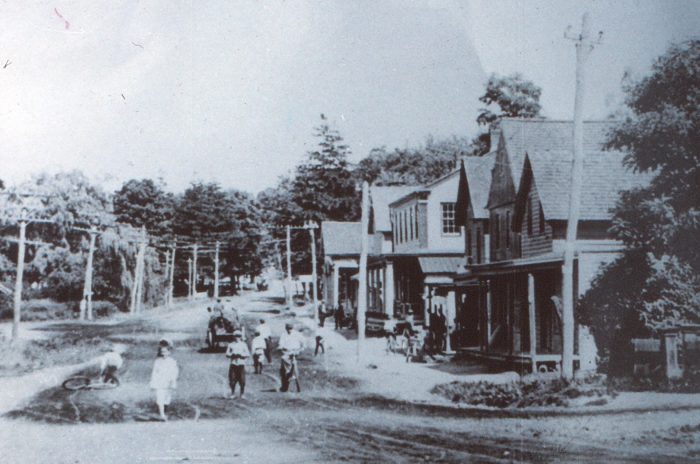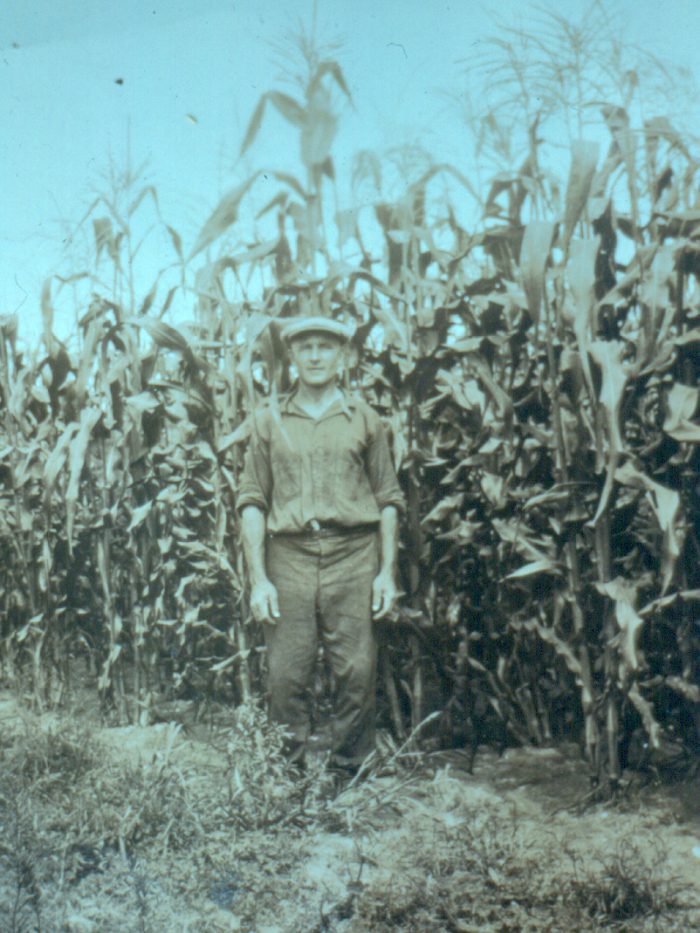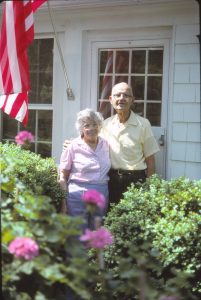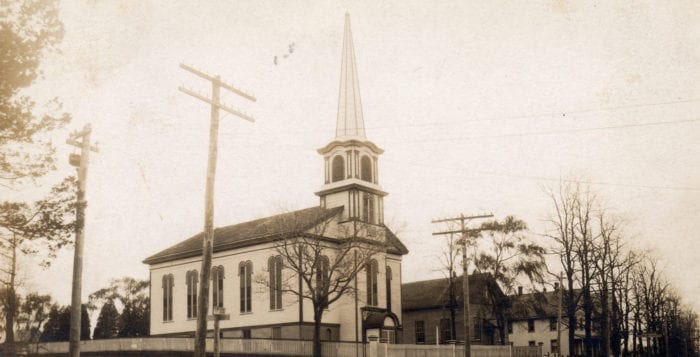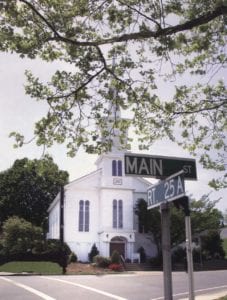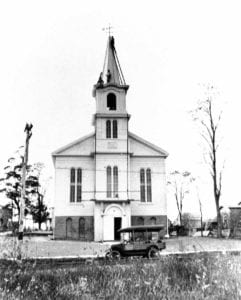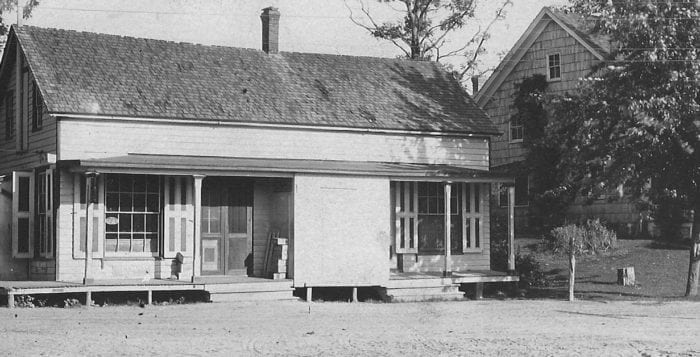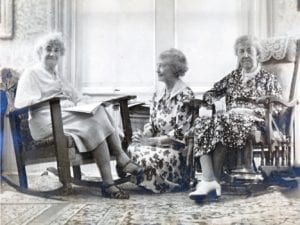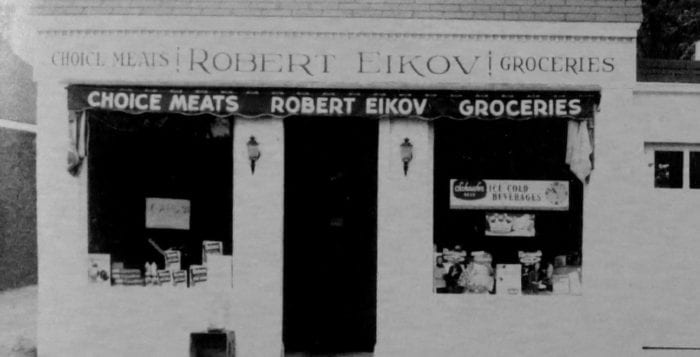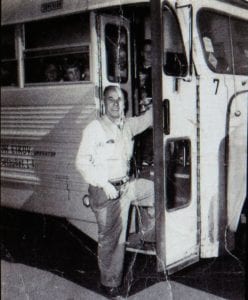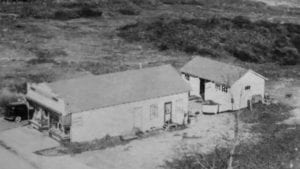By Beverly C. Tyler
Just before the turn of the 20th century, the Three Village area presented a vastly different appearance than it does now. The shipbuilding era ended three decades before and the industries that manufactured pianos and rubber goods had come and gone. The community had only the tourist trade and some coastwise shipping and fishing to supplement the farming that had been its backbone since 1655.
The roads through the villages were unpaved and in the late winter the narrow streets would be rutted and muddy. When it rained it was sometimes difficult, often impossible, for a horse and carriage to travel the loam and clay roads. Where the roadway passed near an underground spring it was also often flooded. Traveling by foot was more common than today and a necessity when the roads were impassable.
The local area had fewer homes and they were often unpainted. The older shingle-covered houses presented a light gray, somewhat drab appearance as they stood alongside the uneven winding roadways.
Farms dominated the landscape through the early years of the 20th century and the fields were occasionally broken by small areas of woodland or meadow and by orchards of apple trees.
Throughout the 19th century trees were cut to be used as firewood. Most of this wood was cut into cords and shipped to New York City to heat the many homes there. The areas where the trees were cut down were cleared of stumps, plowed and planted. Some fields were left as meadow for grazing or to recover from too many years of farming. In most places you could look from wherever you stood to where the field disappeared over a hill. The view would be broken only by a house or a small stand of trees.
The hamlet of East Setauket consisted of a group of small stores and a few homes. Surrounding the small village were fields and meadows sloping gently down to the harbor. The creek that still runs under the road divided the little commercial area almost in half and was crossed by a narrow wooden bridge that provided an unobstructed view of the stream below.
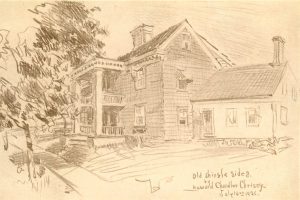
At the east end of the village, on the south side of the road, were three homes belonging to members of the Jones family. Two of the homes, still standing in their original locations just east of the Three Village Church, belonged to Captain Benjamin Jones and his brother, Walter Jones, Jr., sons of Walter Jones, Sr. and Charity Smith Jones.
Benjamin had been master of many ships including the “Mary and Louisa” which was built in Setauket and which sailed on a three-year voyage to China and Japan while he was her captain. Walter and Charity’s home, known as Old Shinglesides, was built in 1754 and was bought in 1760 by Ebenezer Jones, Walter’s father. Walter lived there from the time he was married on Jan. 28, 1824 until he died on March 23, 1877. As detailed in the Three Village Guidebook, “the house was called the Mansion House by members of the Jones family because it was the home of Walter, Sr., the then patriarch of the clan.”
In 1895, Charity Smith Jones, then in her 90th year, was still living in the home where she raised her family. The Mansion House was still an impressive structure both inside and out. The kitchen included a brick oven and a black settle. The dining room and sitting room were both lined with wainscoting. The sitting room included deep window seats, a number of cozy chairs and a big fireplace. The parlor, across the entry hall from the sitting room, was elegantly paneled on the ceiling and three walls with a large fireplace on the west wall. Sitting in this parlor, Charity Jones was described in an article in Popular Monthly as, “a sweet-faced old lady who is the pink of antique perfection from her spotless black cloth slippers to the white handkerchief over her head.” In the article she talked about her life. “I was born in 1806, and Captain Jones brought me to this house when I was a bride of eighteen. That was in 1824, and the house was just as old then as it is now. Yes,” she adds, with a snap of pride in the faded eyes, “I have lived in this house bride, wife and widow for seventy years, and when Captain Jones died he left it all to me.”
The Mansion House stood on its original site until 1962 when it was moved to make room for the construction of the post office (now Elaines restaurant). Restored by Ward Melville, the house now sits comfortably along Gnarled Hollow Road overlooking a small pond. Charity Jones died on Aug. 11, 1897 in the 92nd year of her life. She is buried in the Setauket Presbyterian Church graveyard in company with many other, even older, local residents.
Beverly Tyler is Three Village Historical Society historian and author of books available from the Three Village Historical Society, 93 North Country Rd., Setauket, NY 11733. Tel: 631-751-3730. www.TVHS.org

